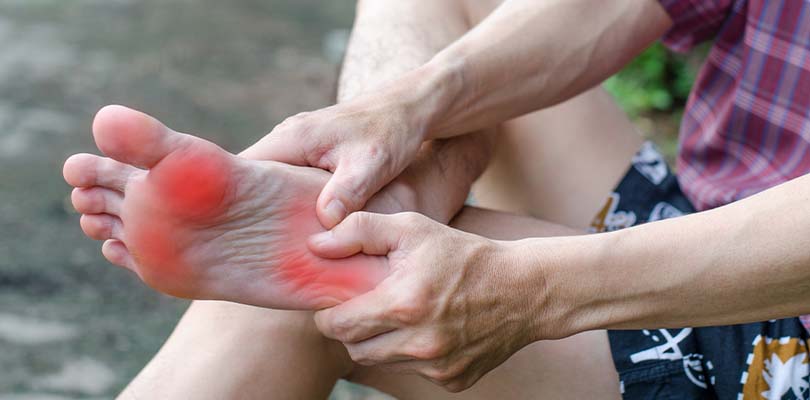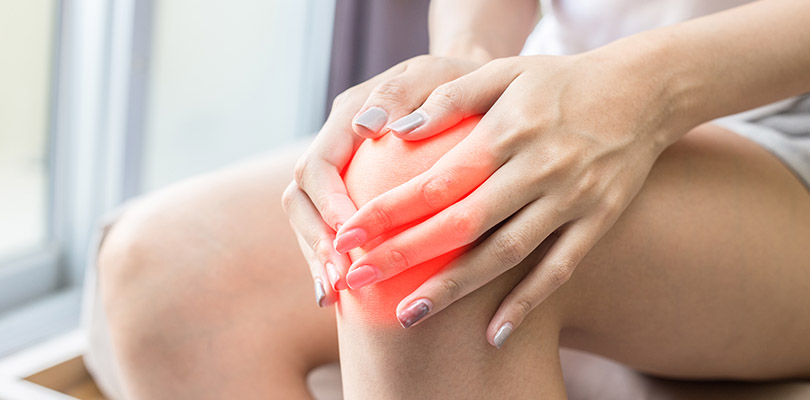What are Flat Feet Symptoms?
Fun fact: we are all born with flat feet, as our arches only start to develop at 3 years old. Sometimes, the arch does not develop properly and sometimes it does not develop at all. In other cases, flat feet occur in adulthood. Are arches really important? Let’s explore flat feet symptoms and how flat feet can affect your health.
What Are Flat Feet?
Exactly as it sounds, flat feet occur when the entire sole of the foot touches the floor when you stand. Instead, the arches inside of your feet are flattened, often due to not developing during childhood. Improper development is not always the case; flat feet can be the result of another cause, such as the result of an injury. A function of the foot arch is for support when you stand, walk and move around. Flat feet can occur in one or both of your feet, and these progressive deformities can become more and more painful over time.
Two Types of Flat Feet
Flat feet generally fall into one of two categories: flexible or rigid. With flexible flatfoot, the arch can be seen when the affected foot is not bearing any weight, but visibly occurs when weight is put on the foot. Rigid flatfoot does not show an arch at all.
Symptoms of Flat Feet
Flat feet symptoms vary depending on the severity of the condition. The silver lining when it comes to symptoms is that flat feet are usually painless (but not always). Some of the symptoms you may experience are:
- Foot pain in the heel or arch that may get worse with activity
- Swelling inside of the ankle
- Trouble walking
- Difficulty bearing weight on the feet
- Misalignment of the legs, which cause problems in the ankles and knees
- Inability to lift heels off the ground while rising onto the toes
- Bumps on the side of the feet
What Are the Causes?
Many cases of flat feet occur due to improper arch development in childhood. Other cases of flat feet may be the cause of:
- Torn or broken-down soft tissue in the arch
- Arthritis
- Lax ligaments in the foot
- Bone fracture or dislocation
- Heredity reasons
- Wear and tear from age
If you wait to speak with your children until the divorce is certain, you have waited too long. We have some tips for dealing with children and divorce.
Risk Factors of Flat Feet
There are some factors that increase your risk of getting flat feet. These factors include can include gender, diabetes, hypertension, obesity, traumatic injury and Down’s syndrome.
How Flat Feet Are Diagnosed
A good rule of thumb with any health issue is to always get a proper diagnosis from a healthcare professional. A doctor will assess you by examining your bones and muscles for damage. They’ll use x-rays to monitor the position of your arch and track any changes in your bone structure over time. A CT scan is also helpful, offering similar advantages as an x-ray, but it gives a snapshot from many angles at the same point in time. If required, a doctor may use magnetic resonance imaging (MRI) and ultrasounds provide a look into your foot’s soft tissues. A diagnosis will give you the full picture of the impact your flat feet have on your lifestyle and may help prepare you for other health issues that may spring up because of your flat feet.
Health Risks of Flat Feet
Flat feet may not sound like a serious issue, but it can lead to greater health risks beyond flat feet symptoms. A number of problems may occur because of the altered position of the feet, which affects how your body moves. Some additional issues or conditions caused by flat feet include:
- Inflammation of soft tissue
- Foot, arch and leg fatigue
- Heel, foot and ankle pain
- Knee, hip and lower back pain
- Plantar fasciitis
- Posterior tibial tendon dysfunction
- Rolled-in ankles
- Abnormal walking patterns
- Shin splints
- Bunions
- Hammertoe
- Arthritis
Treatment Options
If you do not have any pain, treatment of flat feet is not required. When there are issues with how your body moves or feels, treatment can help manage foot pain, assist with mobility and preserve (in some cases restore) function. For children, they usually outgrow flexible flatfoot when their foot ligaments properly develop. If you are concerned about your child’s flat feet, see a doctor for an assessment.
Your doctor may prescribe physical therapy to help you with pain management. This therapy will help move better and teach you how to modify your daily activities. Medication is also available if you get a prescription from your doctor. They’ll likely advise you to take nonsteroidal anti-inflammatory drugs to relieve pain.
Other treatment options include braces, custom-made insoles, or orthotics. These may offer relief and help with mobility. In some cases of rigid flat feet, surgery may be required if other treatments fail. There are a few different types of surgery that include repairing damaged tendons, fusing bones of the foot or ankle together, or cutting and reshaping bone to correct alignment.
At-Home Solutions to Ease Symptoms of Flat Feet
If you have a minor case of flat feet, or you are concerned about getting flat feet, there are a few things you should do if you are not ready to see a doctor:
- Purchase better fitting shoes that offer more support
- Use shoe inserts, such as arch supports
- Give your feet a break (rest and apply ice if necessary)
- Exercise to help with mobility
- Losing weight to take off added pressure on your feet
Though flat feet are often from gradual development, pay attention to any symptoms or physical limitations you may have. If you notice any changes to your feet, implement some home solutions and reach out to your doctor if required.







